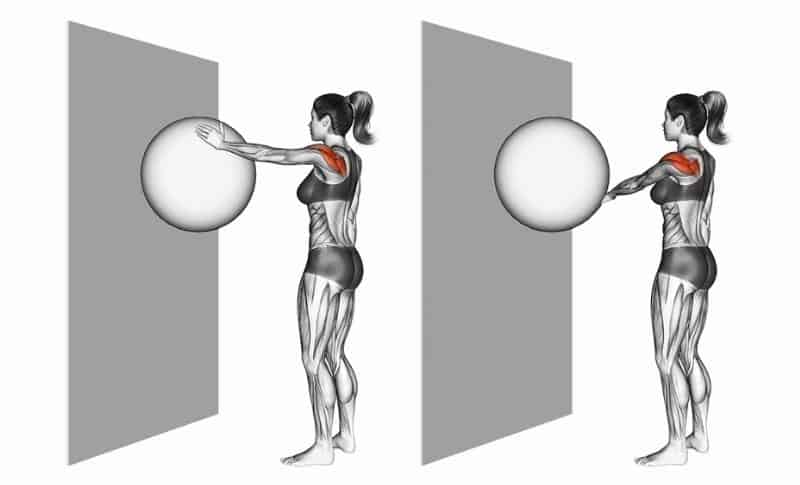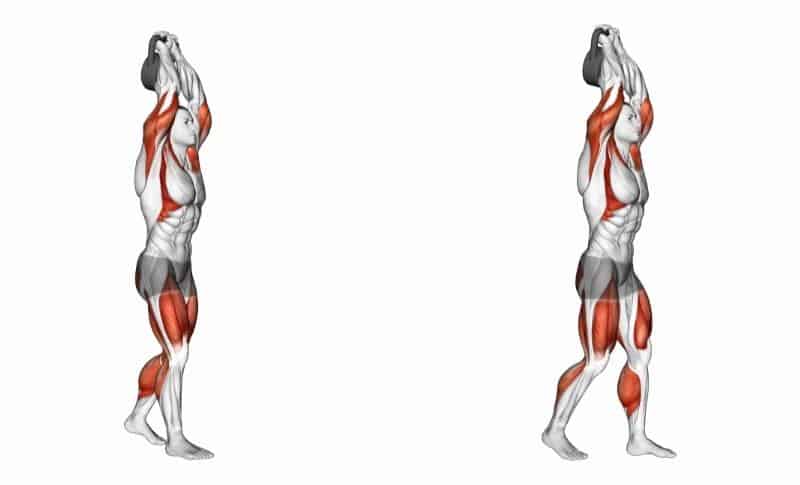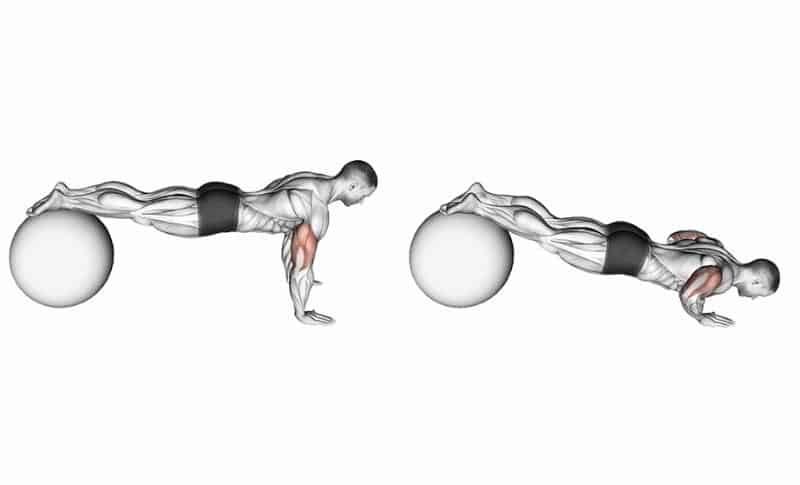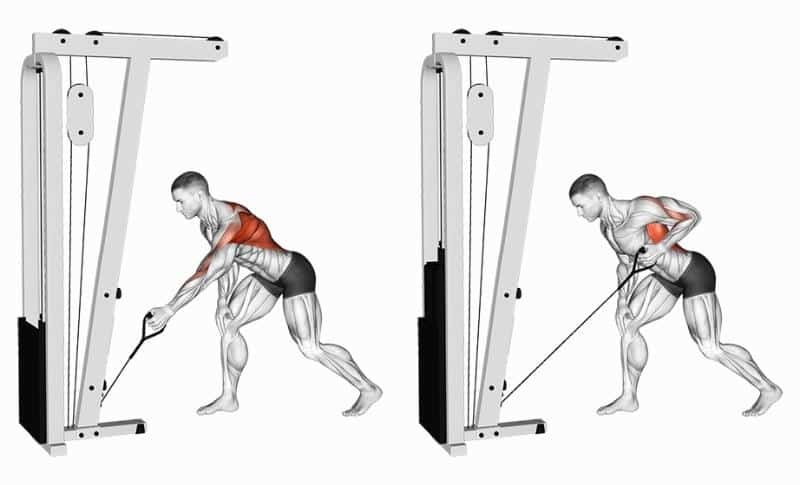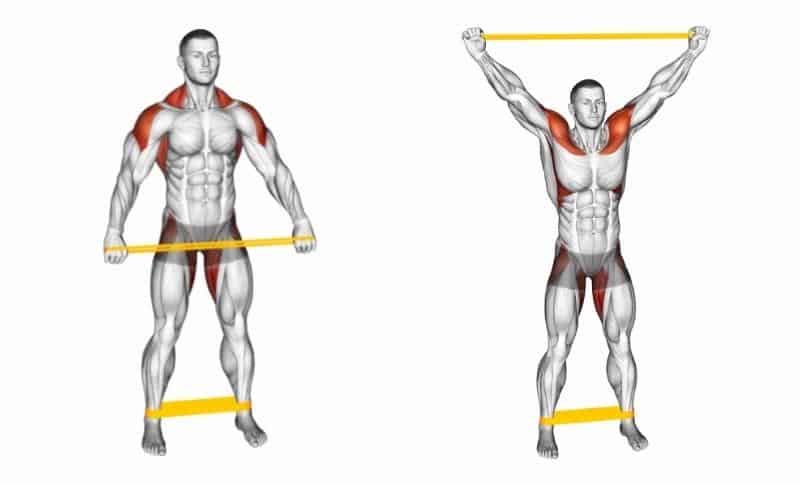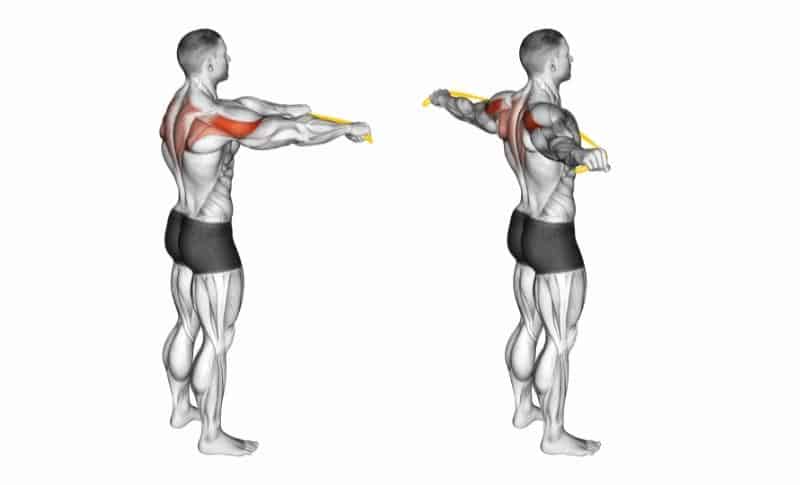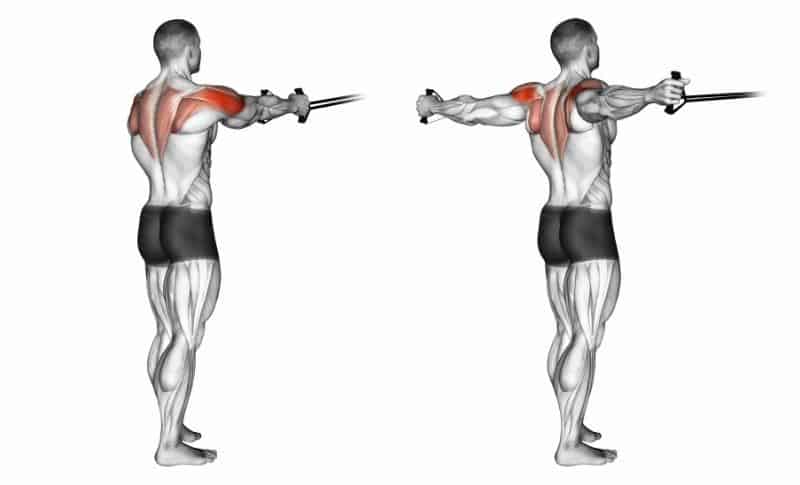Training
The 10 Best Scapular Exercises
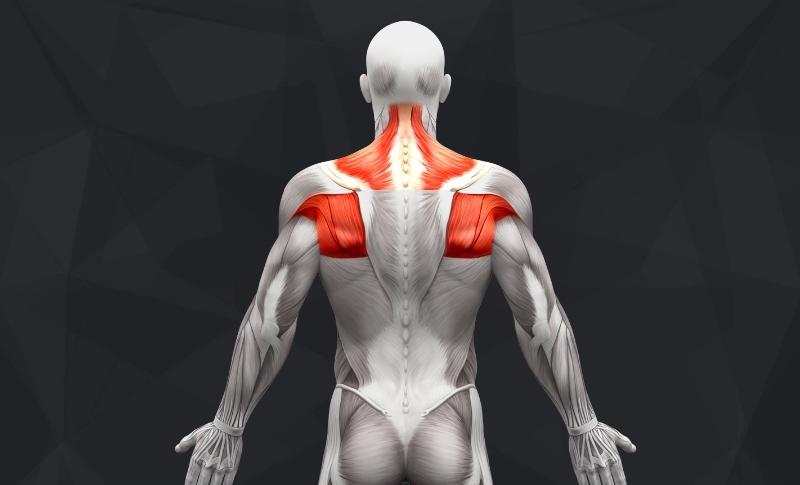
What are the best scapular exercises?
The best scapular exercises help strengthen the shoulder blades, increase your strength for pressing, and improve shoulder stability.
Incorporating scapular exercises into your workout routine is a no-brainer. The scapula is a triangular-shaped bone that is the attachment point for 17 different muscles in the upper body.
Having strong shoulder blades means the muscles surrounding the bone are given the attention they deserve through targeted exercises.
Without further ado, let’s get into the best scapular exercises for those shoulder muscles!
The Best Scapular Exercises
Our exercise lists are created by determining the best exercises for muscle growth, core strength, and overall health and well-being.
Here’s our list of the 10 best scapular exercises:
10. Modified Plank With Protraction
Great for:
Maximizing shoulder stability and strength by activating the serratus anterior.
How to do it:
- Get in a modified plank position, resting your forearms flat on the floor
- Engage your core while keeping your back flat and neutral
- Activate your serratus anterior by pushing your weight through your forearms, separating the shoulder blades as you slowly raise up
- Hold for three seconds, then lower to the starting position
- Repeat as desired
Why:
We get it… planks are notoriously challenging and can make you shake at the end of a long workout.
But they are a great exercise for improving stability in the core and shoulders and are useful in both warm-up and shoulder exercises.
Protracting the shoulders in this modified plank will target the serratus anterior and get it working on overdrive. It’s a commonly forgotten muscle group but is essential for shoulder stability!
When:
Another great exercise for a shoulder warm-up or cool-down, the modified plank with protraction helps keep your shoulders stable and is a great choice for those with pesky shoulder injuries or pain.
Try 2 sets of 8 to 10 reps and scale up from there. You can do this movement as often as you like; try just a few every day and see what the difference is in the strength in your shoulders.
9. Wall Ball Circles
Great for:
Strengthening the serratus anterior and rotator cuff muscles in the shoulders, resulting in an improved external rotation.
How to do it:
- Face a wall and hold a medicine ball in front of you
- With one hand, press the ball up to the wall and apply pressure to hold it against the wall
- Using your palm, roll the ball in a small circle, both clockwise and counterclockwise
- Switch hands and repeat as desired
Why:
The rhythmic movement involved in wall ball circles effectively creates mobility and fluidity in the shoulder muscles.
You can enhance this move by intentionally engaging the abdominal muscles for an additional core burn.
When:
You can use a heavier ball for this exercise if you need more of a challenge and don’t have any shoulder-related injuries. Try 2 sets of 12 reps in each direction for a warm-up.
Incorporate wall ball circles into any shoulder day warm-up for mobility and to keep the muscles in your shoulders and upper back fluid and stabilized.
8. Overhead Carry
Great for:
Strengthening scapula stability and improving overhead strength for other exercises like the overhead press and squats.
How to do it:
- Grab a barbell with weight or unloaded
- Clean and press the weight overhead, hands shoulder-width apart
- With your biceps next to your ears and your wrists neutral, take slow, intentional steps forward while looking straight ahead
- Continue walking for as long as desired
Why:
There’s no better movement than the overhead carry to build strength in the upper back and shoulders.
Time under tension forces the muscles surrounding the scapula to activate and hold heavy weight, leading to muscular hypertrophy.
Carrying heavy weight helps improve your overhead stability and works the core for a total upper body burner.
When:
Overhead carries can be incorporated into arms or core workouts around three times a week. Focus on your form and keeping your back straight and engaged, then add weight.
7. Forearm Wall Slides
Great for:
Engaging the scapular retractors and lower traps for an improved scapular upward rotation and improved external rotation.
How to do it:
- Stand 3 inches away from a wall, and retract your scapula by pinching your shoulder blades together
- Rest your forearms against the wall and slowly slide them upwards
- Keep each shoulder blade squeezed while you slide your arms
- Slowly lower your forearms and repeat as desired
Why:
To improve scapula strength, regular occurring motions have to be implemented in workouts to be successful. This is one scapular retraction exercise you won’t want to miss.
Wall slides help with overhead motions that we do every day and that professional athletes perform in their respective sports.
This movement helps improve overall shoulder strength and function, so don’t ignore it!
When:
This exercise can be completed anywhere with walls. So if you’re at home, in your office, or at the gym, wall slides can be done.
By keeping your core engaged, abdominal muscles squeezed, you’re also lightly working the core as well.
6. Stability Ball Push-Ups
Great for:
Challenging your scapular strength by requiring balance, resulting in shoulder stability and strength.
How to do it:
- With your hands centered on a stability ball, settle your feet hip-width apart on the ground
- Engage your abdominal muscles, squeeze the glutes, and slowly lower yourself into a push-up
- Press back to the starting position and repeat
Why:
This scapula workout takes it to the next level for stability; the unstable surface requires the body and mind to focus on maintaining balance on the ball.
The stabilizing muscles in the shoulder blades activate and keep you balanced on the ball, while the core muscles become engaged to help maintain balance as well.
When:
If you have a stability ball in your home gym, these can be done anytime! Otherwise, try to complete this movement two times a week in the gym.
You may not complete many reps at first because balancing will require all of your muscle focus. Keep at it, and you’ll be doing full sets in no time.
5. Reach And Rows
Great for:
Increasing range of motion, resulting in more muscle mass and heavy training for the serratus anterior.
How to do it:
- Loop a resistance band around an anchored object (or use a standard cable machine)
- Grab the band or handle in one hand and walk back until you feel resistance in the band
- Stand in a split stance, with the opposite leg forward to the arm that is pulling, knee bent, and the other leg out behind you
- Lean forward with your torso, reaching for the anchored object or machine
- Pull the handle or band low and towards your hip, keeping your shoulder down
- As you pull, raise your torso and stand up straight
- Repeat as desired, then switch to the other hand and opposite leg
Why:
For a solid stretch in your upper back and to engage the serratus anterior (which can prove to be tricky), reach and rows will get your back muscles toned up in no time.
This unilateral exercise also allows you to focus on slow, deliberate movements to properly move one scapula away from the other, which is why it’s one of the best scapular exercises.
When:
Reach and rows can be incorporated into your back or arm day workouts.
They are fairly low-impact and can be done three to four times a week. Try completing 3 sets of 10 reps (on each arm).
4. Banded YTWLs
Great for:
Training the upper back through movements done in daily life and improving scapular stability and shoulder strength.
How to do it:
- Anchor a band near chest height and grab with both hands
- Stand up straight with your feet hip-width apart and engage your core
- Raise your arms slowly overhead in the shape of a Y
- Complete 5 reps
- Straighten your arms slowly out to your sides in the shape of a T
- Complete 5 reps
- Raise your forearms, bending at the elbow, stopping your hands parallel to your ears, making a W
- Complete 5 reps
- Squeeze your shoulder blades together, pull your arms back, bend at the elbow and lift them, making an L
- Complete 5 reps
Why:
YTWLs are essential for an upper body and shoulder burn. Not only do they target every movement of the shoulder blades, but they force all the muscles in the back to activate and work.
These are typically done with a band looped around an anchored object, with dumbbells, or on a cable machine, so you have options on where you complete this scapular exercise.
Any scapular exercise that isolates and activates the shoulder muscles simultaneously is a win-win in our book!
When:
If you notice one of the movements feels easier than the others, you can place a heavier focus on those that challenge your strengths.
For example, if the W movement feels easier than the T’s, you can add more reps to the T set or train them separately.
3. Scapular Push-Ups
Great for:
One of the most effective scapular stabilization exercises for shoulder stability and external rotation.
How to do it:
- Place your hands flat on a wall, chest height and shoulder-width apart
- Reach with your sternum towards the wall until your shoulder blades come together behind you
- Push your sternum away from the wall, opening up the scapula and rounding your back
- Repeat as desired
Why:
For shoulder stabilization, posture improvement, and preventing neck pain, scapular push-ups are the end all be all.
Wondering which muscle you should thank for being able to lift your arms above shoulder height?
It’s the serratus anterior, the muscle commonly known for helping throw a punch (by protracting the scapula).
By summoning the strength of the serratus anterior, scapular push-ups force the shoulder muscles to apply strength and stretch their range of motion.
When:
Start with 3 sets of 10 reps and try to complete this exercise twice a week before adding reps to your set. You may feel some shoulder soreness at first, which is normal.
2. Banded Pull-Aparts
Great for:
Focusing on scapular retraction and as an effective warm-up exercise for a heavy shoulder workout.
How to do it:
- Hold a long band with your palms facing each other, shoulder-width apart
- Pull the band apart as far as you can, trying to make your arms as wide as possible
- Slowly relax your arms and bring them back to the starting position
- Repeat as desired
Why:
Before a push or pull workout, pull-aparts are an effective warm-up exercise that will get the muscles moving and ready for the range of motion.
Pull-aparts also strengthen the delts, rhomboids, and middle traps.
When:
Use a light band for the first sets of this exercise, so you feel comfortable with the resistance.
When you feel comfortable, complete 3 sets of 20 reps, 3 days a week.
1. Reverse Banded Flyes
Great for:
Achieving upper back hypertrophy through a larger range of motion, targeting all the upper back muscles.
How to do it:
- Attach a resistance band with handles around a cable machine or pole
- Take a handle in each hand and step back until you can feel tight resistance in the band
- With your elbows straight and posture strong, pull the band apart, making your arms form a T
- Lower your arms back to the starting position
- Repeat as desired
Why:
To engage the shoulder blades, delts, traps, and rhomboids all at once, reverse banded flys are a solid choice. It’s no surprise that they’re #1 on our list of best scapular exercises!
For an effective burn and to sculpt strong shoulder muscles, it doesn’t get much better than reverse banded flys.
You’ll feel the burn in your shoulder blades, upper back, and even the core gets a bit of heat.
When:
Reverse flys are most effective during arm and back day exercises, typically mid-workout when the shoulder blades and serratus anterior are already warmed up.
FAQs About Scapular Exercises
Ready to jump into some exercises that target the scapula and shoulders? Here are our answers to a few commonly asked questions that are worth reading first.
Q: What is the scapula good for?
The scapula, also known as the shoulder blade, is a triangular-shaped bone that helps to connect 17 muscle groups in the upper back.
The scapula helps with stabilizing other bones in the upper back and supports the shoulders through external rotation.
Training the scapula can prevent many injuries to the shoulders and back, including shoulder impingement.
Q: Why is scapular movement important?
The scapula is responsible for the movement and mobility of lifting your arms overhead.
Without proper movement in the shoulder blade, shoulder impingement can occur, which can be extremely painful.
Scapula control and movement is important because it heavily affects the way your shoulders interact with the muscles in your upper back, preventing injury and strain while also allowing you to punch, lift your arms overhead, and more.
Q: How do you increase scapular mobility?
The best way to increase scapular mobility and strengthen each shoulder blade is through focused scapular exercise.
By increasing scapula strength and mobility, you’ll build strength in your shoulders, improve shoulder function, and prevent injury.
The best scapular exercise to increase mobility is the reverse banded fly.
This movement improves the scapula’s range of motion, targeting the shoulder blade for a slow, intentional burn.
Q: How do you activate scapular muscles?
To activate scapular muscles and improve scapula control, squeezing the shoulder blades is a common way to activate the muscle system and get them warm.
The scapular muscles are most often activated in chest or back exercises when you are protracting and retracting the muscles in the shoulders.
Q: How do you stabilize the scapula?
To stabilize the scapula position, you have to know which muscles to use and how to activate them.
Often, the rhomboid overcompensates for the weaker muscles in the upper back that help with stabilizing the scapula.
You can do this by practicing the right positioning of the shoulder girdle by pulling the shoulder blade back and down and adding exercises to strengthen the muscles in the upper back.
Summary
It may be an area of the body that gets overlooked, but there’s no denying that the scapula and its surrounding muscles are of the utmost importance for upper body strength.
Think of all the movements you do in conjunction with your shoulders. Without the scapula, those motions would be toast.
Any scapular retraction exercise will help build stronger shoulders and improve muscle fluidity in the shoulders.
What’s the best scapular exercise for you? You’ll have to try out this list to find out!
Here’s a quick recap of the 10 best scapular exercises:
- Reverse Banded Flyes
- Banded Pull-Aparts
- Scapular Push-Ups
- Banded YTWLs
- Reach And Rows
- Stability Ball Push-Ups
- Forearm Wall Slides
- Overhead Carry
- Wall Ball Circles
- Modified Plank With Protraction
If you enjoyed this article, check out some of our other exercise lists:
- The 10 Best Lower Chest Exercises
- The 10 Best Upper Chest Exercises
- The 10 Best Lower Back Exercises
- The 10 Best Upper Back Exercises
- The 10 Best Bicep Exercises


